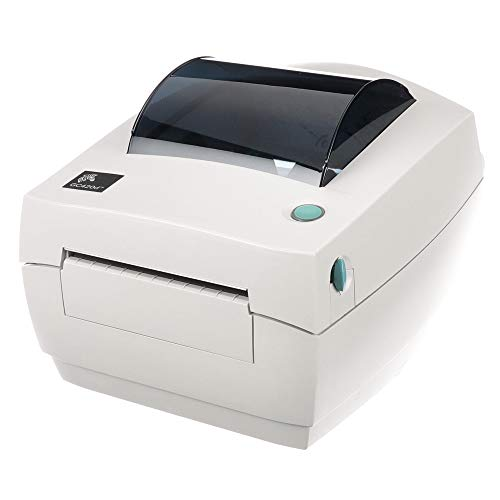| Merge Images | Merge Barcodes | Merge PDFs | Store | |
Free Trial | |
How to Print Amazon Transparency Labels
|
Sample Transparency code CSV download If you don't have codes from Amazon yet, here's a CSV file of 100 sample codes for testing label printing. These are artificial codes for testing only; they are NOT valid Transparency codes even though they look valid. Amazon will reject them if you send them inventory with these. Download Sample Transparency Codes CSV For education only. No warranty express or implied. |
Download templates Choose and download one of the collections of templates below. These are sample templates for Microsoft Word (Microsoft only) with the OnMerge Barcodes add-in installed.
Choose the right label size Amazon recommends a few layouts + sizes of labels they call Layouts 1, 2, 3 and 4. There is no overall "best" layout, but some layouts fit better on different packages. Transparency guidelines require the Transparency logo and barcode to be front-facing if possible; otherwise back, side or top in that order of preference.
Unfortunately, the sizes recommended by Amazon are non-standard. Those require custom-manufactured blank label stock.
To work around that, we've added templates that use off-the-shelf thermal blanks available from Amazon, Uline, etc. Amazon do allow limited size variations. We also include layouts for the "official" recommended sizes for reference.
Just search Amazon, Uline, etc. for your preferred label size; for example 1.25" thermal label
No time to order blanks? We've also included variations of each layout that work with the 4x6" thermal labels that your shipping department surely already uses. You will need to dice those printed sheets manually after printing.
Which exact label size is best? Use the label that's a good fit for your package, is easily available, and fits your printer. Most thermal printers can print on many different-sized labels wide, not just the familiar 4x6" shipping labels. For example, most Zebra printers print on anything between 1" to 4".
5 templates
For education only. No warranty express or implied. |
4 templates
For education only. No warranty express or implied. |
8 templates (4 sizes each of UPC-A & GTIN-13)
For education only. No warranty express or implied. |
Set up Micosoft Word These sample templates are only for Microsoft Word for Windows (sorry, not Mac) with the OnMerge Barcodes add-in installed. They do not work with Google Docs, Libre Office, etc.
OnMerge Barcodes is an inexpensive Word software add-in that generates many kinds of barcodes, including the specific kind that Amazon requires. You must use this add-in because Word's built-in barcodes are not quite the right kind for Amazon.
You can download OnMerge Barcodes software here. A temporary free trial version is available for testing.
Once you've installed OnMerge on your computer, you're ready to load a template and print labels.
 Print labels Go ahead and open a downloaded template sample file in Word once Word and OnMerge Barcodes are set up.
Print labels Go ahead and open a downloaded template sample file in Word once Word and OnMerge Barcodes are set up.
- The template will immediately pop up to ask what SKU this batch of labels is for. It will also ask you to select the CSV file with the Transparency Codes; press Load to accept. You're almost ready to make labels.
- Load labels into your thermal printer and select that printer in Word (File, Print, select printer), then set the label size in the Printer Properties to exactly match the template. If you get any pop-up warnings that page margins are incorrect, press the Ignore button—not Fix. Set any other printer options if needed. You can now click back to your Word document.
- The templates work with Word's Mail Merge feature. Find it on the Mailings ribbon menu. You'll be creating unique labels by mail-merging them with the CSV you selected as a datasource.
- In the Mailings ribbon menu, press Finish & Merge, Print Documents. You'll be given opportunity to print labels for the entire CSV datasource, or to select a subset of data.
- Optional: Word has a feature to preview mail merges: Finish & Merge, Edit Individual Documents. That will create a new document with all your labels. DO NOT PRINT THAT DOCUMENT because the barcodes may not print correctly on low-resolution thermal printers. Instead, go back to the template and do Finish & Merge, Print Documents to print labels specifically adjusted for your printer's resolution.
Keep your codes unique Transparency codes must never be reused. Products with duplicate Transparency codes will be rejected by Amazon's receiving process.
If you print partial batches of labels, there is a greater chance that you might inadventently reuse codes that were used in a previous run. To help prevent that, we recommend that you either
- print only full spreadsheets of labels at one time, or
- make a working copy of the data, then print labels only from the working copy; use Excel to delete the used-up codes from the working copy immediately after you print labels.
Running another batch of labels You don't need to close and re-open the template for each run.
- Double-click on the SKU number next to the square barcode to change it.
- Load a different CSV file with the OnMerge CSV Loader in the Mailings ribbon.
Why OnMerge Barcodes Among the several barcode software systems on the market (e.g. ID Automation™, Bartender), OnMerge Barcodes is great for Transparency because:
- Free Transparency sample templates
- Uses commonly-available sizes of blanks
- Virtually pushbutton operation
- Inexpensive, under $100 one-time (compare to $495++ for Bartender™ Pro)
- Fast software installation and configuration
- Near zero training and learning: OnMerge drops into familiar Microsoft Word by adding a few menu items without disturbing anything else
- Operators don't need to be trained or checked out on unfamiliar new software
- Barcodes optimized for 203 and 300 DPI inexpensive thermal printers such as Zebra, Seiko, etc. to ensure perfect scans
- Free live support
More info? Download one of the layouts above and explore it.
Still have questions? Consult with our live support team here
See also... How to print Amazon FBA FNSKU labels with a thermal printer |
| Privacy Policy | Support | Buy | ||
| Terms & Conditions | Contact Us | Download Free Trial | ||
| Copyright © 2005 - 2021 Soft Horizons All trademarks are property of respective owners. | ||||
